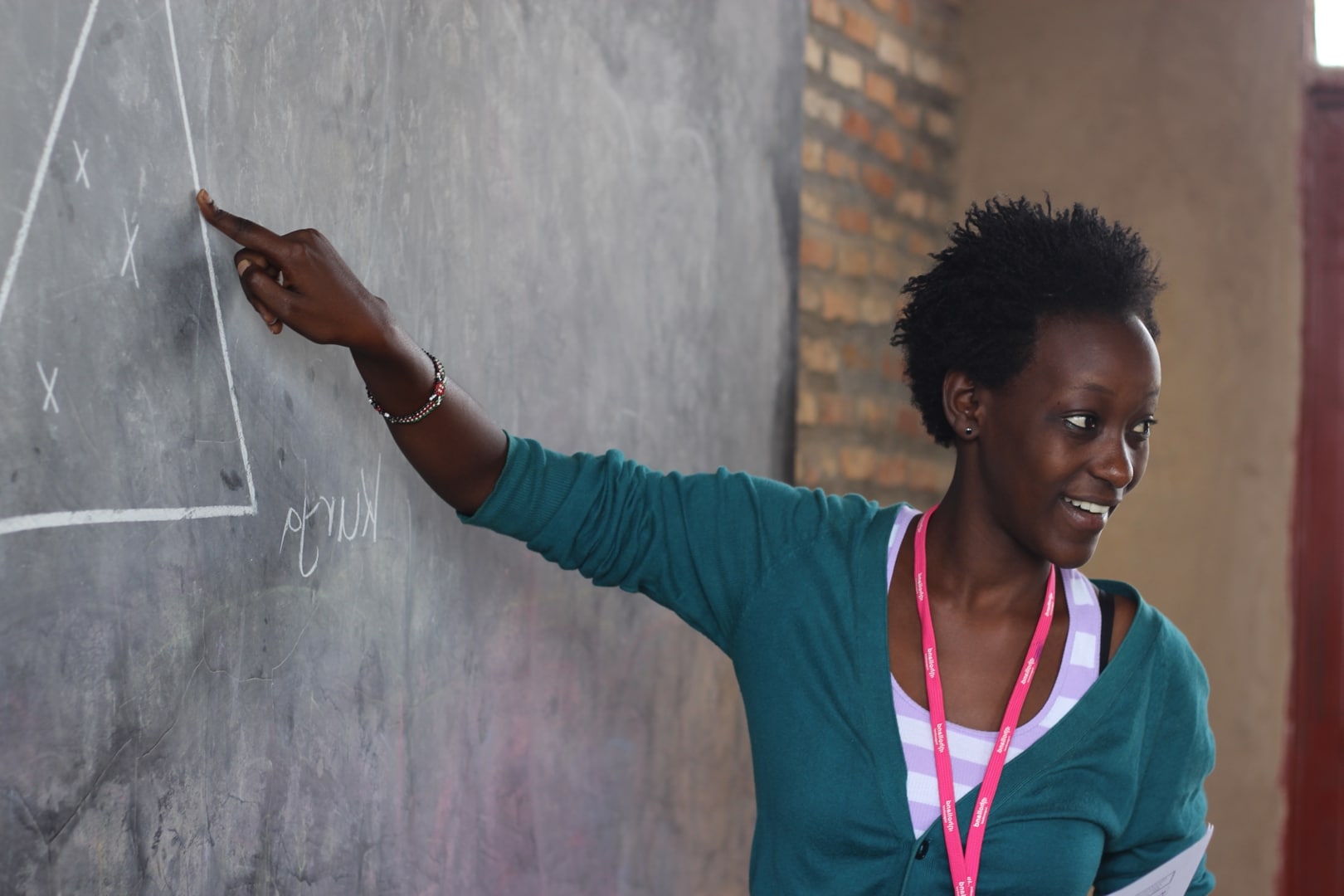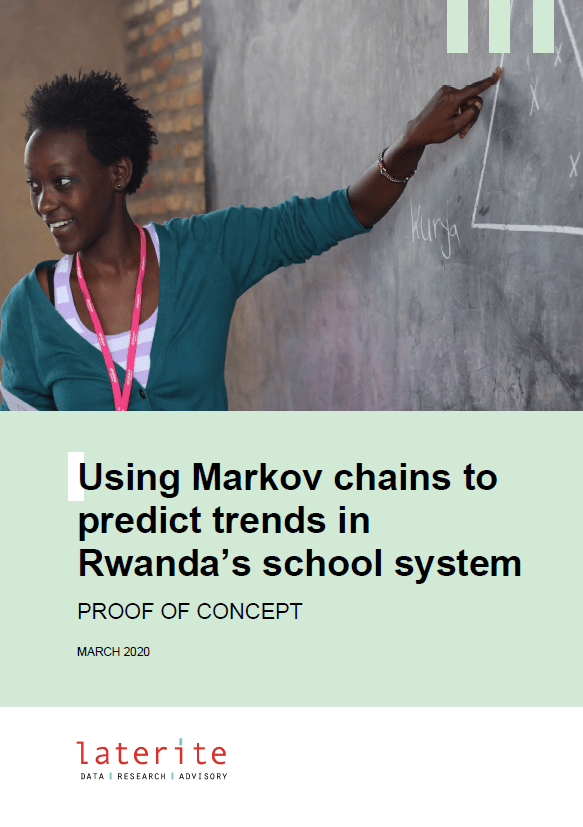Enrolment patterns are difficult to predict
In Rwandan basic education, many more students are enrolled in early grades than later grades. According to 2018 data from the Rwandan Ministry of Education (MINEDUC), enrolment in primary 1 (517,243) was about double the enrolment in primary 6, and eleven times the number of children at the end of secondary 6. This lopsided structure is the result of:
- a rapid increase in the intake of primary 1 students, and
- patterns of progression, dropout and repetition.
This means that predicting and planning for the number of students attending a grade in a year’s time is far from simple.
Markov chains offer a solution
Laterite’s proof of concept shows that it’s possible to use Markov chains and available data to model enrolment patterns in Rwandan secondary education. The result? Our model can support planning and decision-making for the education sector.
Using evidence to plan for the future
Using data from MINEDUC statistical yearbooks and Laterite’s report on Dropout and Repetition, Laterite’s model forecasts enrolment trends in the Rwandan school system up to 2024.
The results suggest that the secondary school population will almost double in the next four years. At the same time, primary school enrolment rates will remain at today’s values.
These predictions have important implications for resource allocation across schools in Rwanda. For example, this can help authorities plan for how many teachers to train to maintain pupil-to-teacher ratios.

